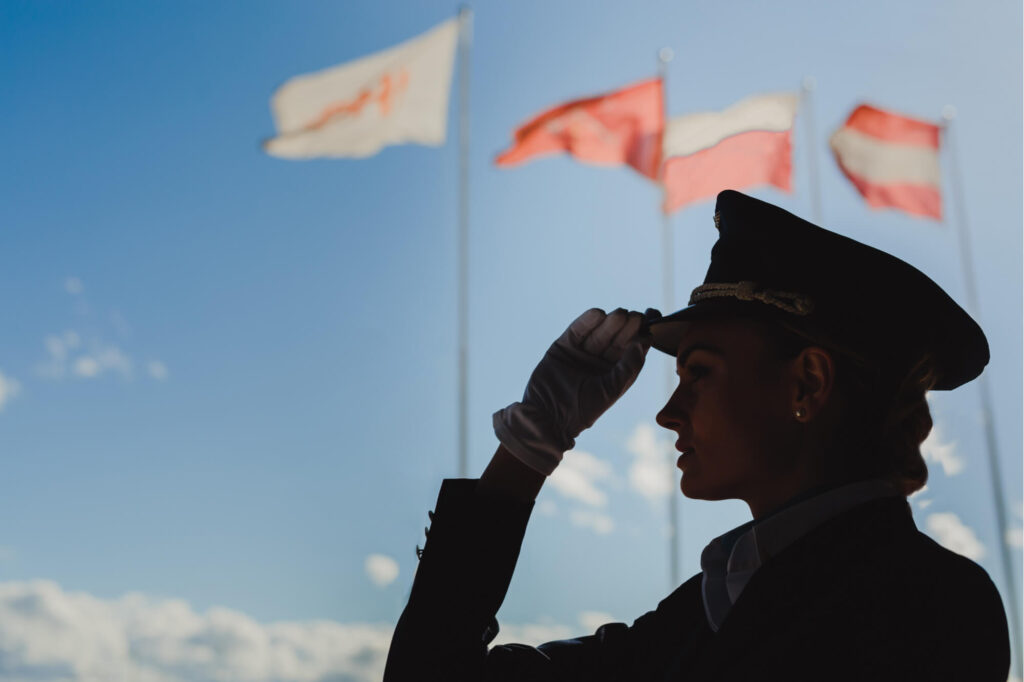Women have been involved in flying planes since the dawn of aviation, with Bessie Coleman, Harriet Quimby and Amelia Earhart among some of the high-flying names.
Despite this, it wasn’t until the 1970s and 1980s that commercial airlines started to employ female pilots. Since then though, progress in getting more women to the flight deck has been slow.
For International Women’s Day and to celebrate one year of its Women in Aviation campaign, AeroTime takes a look at some of the latest data on female pilot numbers worldwide.
In 2021, just 6% of the world’s airline pilots were female, according to the International Society of Women Airline Pilots (ISA+21). It’s pitiful, but at least it’s a (very) minor improvement on the 5% recorded for 2020.
India and Ireland were the best countries in terms of female pilots, with 12.4% and 9.9% in 2021, with those percentages stable from the previous year.
Among airlines, Air India with 12.7% female pilots and Ireland’s Aer Lingus with 9.9% are those with the highest proportion of female pilots worldwide, according to the ISA+21 data.
In the United States, Captain Jenny Beatty crunched FAA numbers to reveal that from 2% in 1990, women still only account for 4.7% of airline transport pilots in 2021.

“I believe the process of getting women into the flight deck is slow due to two main factors – lifestyle and maternity leave,” pilot and aviation safety advocate Aisha Alexander tells AeroTime. “These two factors are the main reason why women consider the field not to be suitable for them. At the same time the industry hasn’t really realized the amount of talent left aside by not improving these two factors and attracting more women into the field.”
What has happened during the pandemic?
There have been fears that gender equality efforts could be undone by the COVID-19 pandemic, with studies showing that women were more likely than men to consider leaving the workforce.
Anecdotally, pilots I have spoken to feel that female pilots may have been more at risk from redundancy because there are simply fewer women in the senior flying roles, such as captains and training captains.
Research from Britain’s Royal Aeronautical Society (RAeS) and the University of the West of England (UWE) is looking into how to get more women into senior flying roles, including training captains and instructors.
A study by McKinsey in the United States in 2021 showed that one in three women said they were considering downshifting their careers or leaving the workforce, compared to one in four who said this a few months into the pandemic.
A separate study by Oliver Wyman and the International Aviation Womens Association in September 2021 showed 59% of women working in leadership positions in aviation had considered leaving the industry.
The authors noted that women were more likely to be pushed out because of negative experiences, whereas men leaving the industry were more often lured away by better opportunities.
However, Aisha Alexander says she believes the pandemic offers chances to boost diversity.
“I see it as the best opportunity because we are facing the reality of pilot shortage and the industry can no longer leave aside all those female pilots who are qualified and who could come to fill the empty positions,” she says.
So what can be done?
As the aviation industry recovers from the pandemic, is there a chance to get more women back into the flight deck?
Other STEM (science, technology, engineering, math) careers have more equal representation. According to ISA+21, 44% of medical doctors are female, as are 33% of astronauts. Women account for 29% of scientists and 21% of engineers. While still a long way from equality, it’s certainly more encouraging than the 6% figure for female airline pilots worldwide.
More outreach, financial support and even little steps, such as making language in flight manuals and aviation more neutral are among the ways that female pilots feel the industry could do more to be more inclusive.
In one example of switching to gender neutral language, the Federal Aviation Administration in the United States changed the definition of NOTAM to Notice to Air Missions, from the previous Notice to Air Men, in 2021.
In January 2022, easyJet launched its latest drive for those seeking to become trainee pilots, placing an emphasis on diversity by fronting the campaign with some of its female pilots and those with unusual previous careers, including a gymnast and a DJ.
The airline says 6.4% of its pilot workforce is female, up from 6% before the pandemic, noting this is just ahead of the industry average.
“We have actually almost doubled the number of female pilots we had in 2015 when we launched our Amy Johnson Initiative. Now we’re beginning to recruit once again, we’re particularly pleased that many women who were due to join us during the pandemic are now joining in the coming months, meaning we’re still set to have more female pilots flying for us this year than ever before,” a spokeswoman for the airline told AeroTime.
Credit: ISA+21

